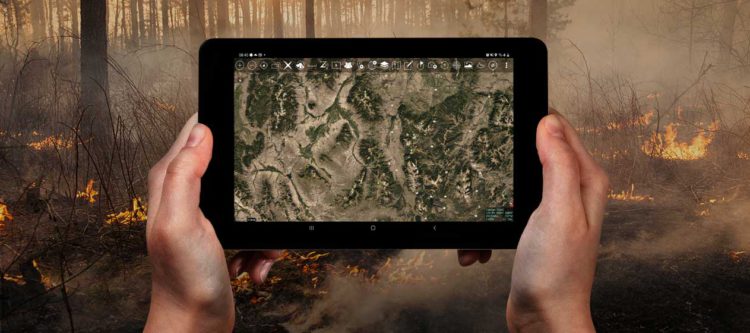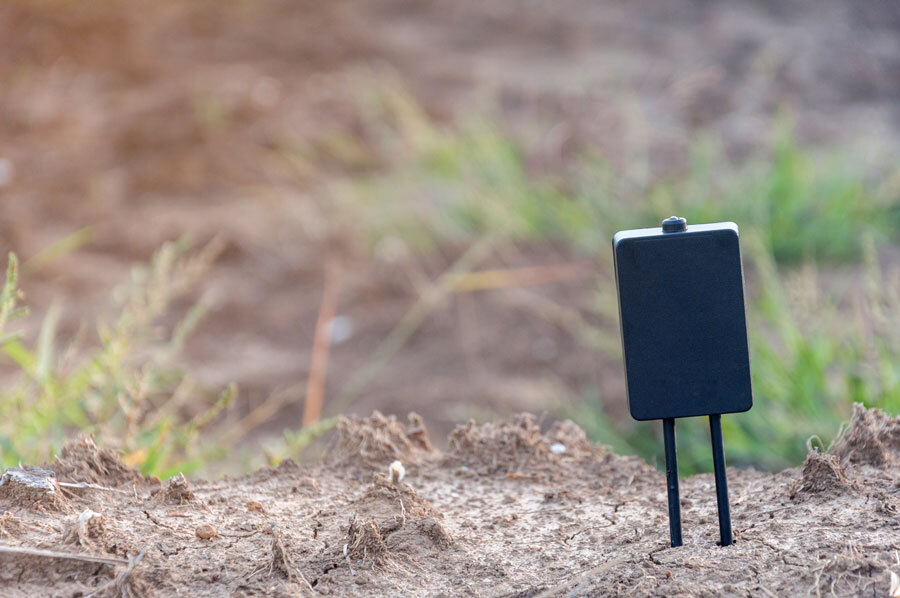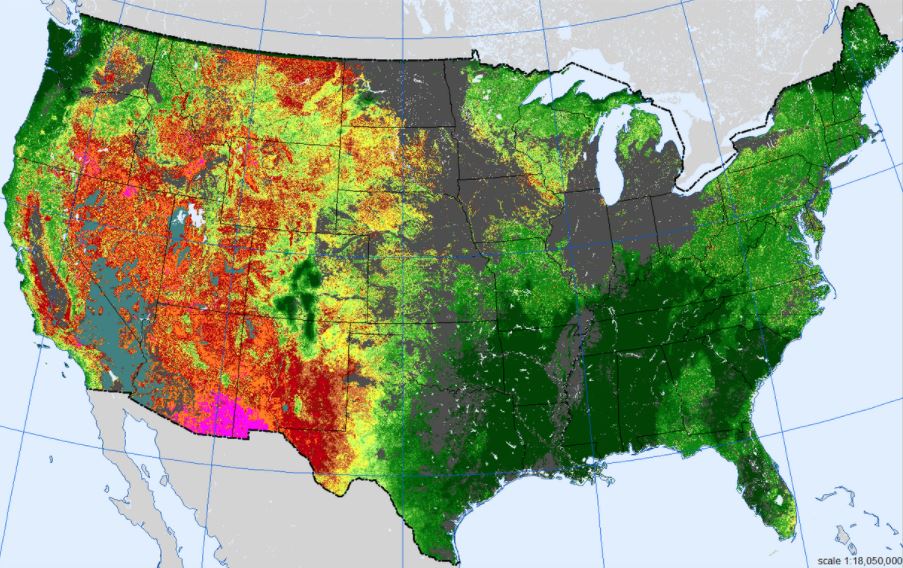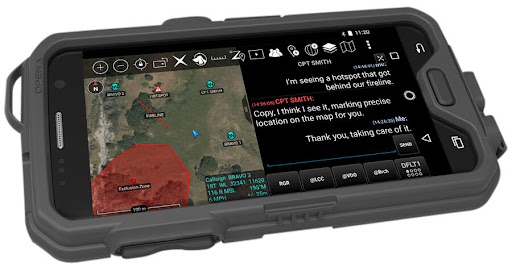The exciting technologies revolutionizing firefighting in 2022

In a list of the most devastating and destructive years for wildland fires since 1960, the worst five years in terms of acreage burned have all occurred within the past decade and a half. That means that we’re living in a time of more frequent, more deadly, and more devastating wildfires than the generations that came before us.
In fact, according to a study by the Congressional Research Service (CRS), a nonpartisan, shared group of staffers that conducts research and analysis for members of Congress, “there were an average of 62,805 wildfires and an average of 7.5 million acres impacted annually,” in the years from 2011 to 2020.
With climate change and other factors increasing the number and severity of wildland fires across the United States, the government has begun to take the threat of wildfires more seriously. They’ve also taken significant steps to take better care of the selfless and heroic individuals that charge headfirst into fires to mitigate the damage to property and save lives.
Within the past year, the Biden Administration has increased efforts to make the job of firefighters safer and better. They’ve done this by signing reform laws into place that drastically increase the compensation for firefighters, change their status to full time employees in many circumstances, and make it easier for them to access mental health services.
These changes were part of the Infrastructure Investment and Jobs Act, and will go a long way towards making it easier to recruit and retain the firefighters our country needs at a time when wildfires are an increasing threat to the health and safety of Americans. But that’s not all the administration is working towards. They also want to make firefighting safer – and they’re working to put the budget dollars in place to make that a reality.
In the Biden Administration’s proposed FY2022 budget, there was a significant amount of discretionary dollars earmarked to make new technologies available to firefighters. These technologies could go a long way to making every firefighter more connected, more informed, and better prepared for when disaster strikes and they’re called into action. Some of these technologies could also make it easier for firefighters that are isolated or injured to be found and rescued.
Here are some of the technologies that the Biden Administration could make available to firefighters, and how they could make a difference in wildfire situations:
IoT technologies and sensors

The Biden Administration has been touting the increased use of Internet of Things (IoT) devices and sensors to identify wildfires more quickly, when they’re smaller and more manageable.
Testing of wildfire detection sensors is currently being spearheaded by the Department of Homeland Security (DHS) Science and Technology Directorate (S&T). According to Jeff Booth, Director of S&T’s Sensors and Platforms Technology Center, “These sensors will provide early alerting capabilities in high-risk areas where detection and alerting aren’t currently available.”
By identifying wildfires in geographically remote, high-risk areas more rapidly, firefighters can begin fighting and managing fires before they grow incredibly large and increasingly dangerous. They can also engage fires before they spread to areas where personal property and lives could be put in danger.
Big Data and data analysis

One of the major trends that we’ve witnessed across the government since the beginning of the COVID-19 pandemic has been digital transformation and modernization. While this sounds impressive, it’s basically a fancy way of saying that the government is embracing new technologies to help increase operational efficiency, improve agency performance, and make it easier for government employees and agencies to accomplish their missions.
The pandemic kickstarted many modernization initiatives since government agencies had to pivot quickly to make remote work possible. So, many early digital transformation initiatives involved the movement of government data and processes online. However, another large part of digital transformation has been the adoption of AI and data analytics to leverage the mountains of data available to government agencies.
By leveraging and analyzing this data, government agencies are hoping to become more proactive, identify red flags before problems arise, and better deploy resources in the places where they can be most effective or have the largest impact. This is something that can also be used in firefighting.
Utilizing data from sensors – including air quality sensors, and other IoT devices – the government will be able to better identify when fires start. Analyzing that data, they can also better identify the environmental factors that start fires and become more proactive in their response. The government can also analyze all firefighting data generated during the fighting of fires to identify the safest and most effective places to deploy firefighting resources – helping to mitigate firefighter deaths and more rapidly managing destructive fires.
Situational awareness and communications

Ultimately, one of the most important tools for a firefighter in the field is the ability to communicate with other members of the crew, officers, and decision-makers. Communication can be the difference between being able to ask for – and receive – help, or being alone as fires move, shift, and change. Communication can be the difference between having the latest intelligence and knowledge about what is going on, or being in the dark. Communication is also the difference between having a coordinated, collaborative effort, or having a number of individuals operating independently – which is the least effective way to fight a fire.
While cellular networks have expanded and improved tremendously – especially in the age of 5G – there are still areas of our country where cellular connectivity and other terrestrial mobile networks aren’t available. There are also some situations where the communications equipment that power terrestrial networks can be damaged in fires, and leave firefighters without connectivity.
This is why mobile mesh networking will be a widely adopted technology for firefighters and hotshot crews in 2022.
Mobile mesh networking can enable the use of communications and situational awareness tools – such as ATAK – off the grid in places where other terrestrial networks don’t exist. This means that firefighters will be able to share information and see each other’s locations even in isolated, remote locations. They can also be used to spread connectivity over a wide geographic area and to each individual without a single, centralized piece of equipment that can be compromised and fail. This means they can deliver resilient and redundant communications that is always available to the firefighter.
Finally, mobile mesh networking can be a low-cost alternative to connecting IoT devices. Instead of each individual sensor requiring its own expensive cellular connection – or incredibly pricey satellite connection – mobile mesh can be used to connect IoT devices over a wide geographic area with no recurring cost. This can help accelerate fire-focused IoT programs, and enable the government to extend them to more areas at a lower cost to the taxpayer.
Enabling resilient, reliable communications and situational awareness alone is enough to make mobile mesh networking a game-changer for firefighting. But its ability to inexpensively connect IoT devices and sensors that can make firefighting more proactive and less dangerous make mobile mesh technologies essential in 2022.







No Comment